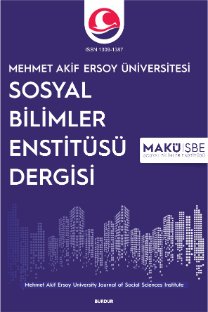From The Dynamic Infrastructure of Mind to the Multiple İntelligences Profile: A Challenge for Curriculum Design
Cognition, Curriculum, Domain Specificity, Dynamic Infrastructure of Mind, Operation
___
Barrett, H. C., & Kurzban, R. (2006). Modularity in cognition: Framing the debate. Psy. Review, 113, 628–647.Fodor, J. A. (1983). The modularity of mind. Cambridge, MA: MIT Press.
Gardner, H. (1983). Frames of mind: The theory of multiple intelligences. New York: Basic books.
Gardner, H. (2006). Multiple intelligences. New horizons. New York: Basic books.
Gentner, D., Holyoak, K. J., & Kokinov, B. (Eds.) (2001). The analogical mind: Perspectives from cognitive science, Cambridge, MA: MIT Press.
Karmiloff-Smith, A. (1992). Beyond modularity: A developmental perspective on cognitive science. Cambridge, MA: MIT Press.
Palmeri, T. J. (2002). Automaticity. In L. Nadel (Ed.), Encyclopedia of cognitive science (488). London: N.P.G.
Pinker, S. (1997). How the mind works. New York: Norton.
Singer, F. M. (1995). Structures et capacités mentales dans l’apprentisage des mathémathiques. Bulletin d’Information CORDEE, No. 1/1995, 27-30, Paris: Unesco.
Singer, F. M. (2004). The dynamic structural learning: from theory to practice. In M. Niss & E. Emborg (Eds.) 10th International Congress on Math Education Proceedings, Copenhagen, Denmark: IMFUFA, 1-17. Singer, F. M. (2007). Beyond conceptual change: Using representations to Integrate domain-specific structural models in learning mathematics. Mind, Brain, and Education, 1(2), 84-97.
Singer, F. M. (2009). The Dynamic infrastructure of mind - a hypothesis and some of its applications. New Ideas in Psychology, 27, 48–74.
Singer, F. M., & Moscovici, H. (2008). Teaching and learning cycles in a constructivist approach to instruction. Teaching and Teacher Education, 24(6), 1613-1634.
Singer, F. M., & Radu, N. (1994 – 1997). Teacher’s guide in mathematics - Grades: 1, 2, 3, 4. Bucharest, RO: Sigma (in Romanian and Russian).
Spelke, E. (2003). What makes us smart? Core knowledge and natural language. In D. Gentner, & S. Goldin-Meadow (Eds.), Language in mind (pp. 277–311). Cambridge, MA: MIT Press.
- Yayın Aralığı: 4
- Başlangıç: 2009
- Yayıncı: Burdur Mehmet Akif Ersoy Üniversitesi Sosyal Bilimler Enstitüsü
İktisadi Kalkınma Sürecinde Beşeri Sermayeye İlişkin Bir İnceleme
Gelene!i Bozmak: Dil Ö!retmenlerinin Yeterliliklerini "n#a Etmek "çin Güçlü Bir Araç Olarak MI
Deconstructing The Canon: MI As a Powerful Tool to Build Language Teachers' Competence
XIX. Yüzyılın İkinci Yarısında Bucak'ta İdari ve Sosyal Yapı
Lisansüstü Öğrencilerin Çoklu Zekâ Profilleri ve Eğitim Alanları
The Relationship Between Multiple Intelligences and Academic Achievements Of Second Grade Students
F. Ebru İKİZ, Firdevs SAVİ ÇAKAR
The Graduate Students? Multiple Intelligence Profile and Their Education Routes
Kavram Haritası Tekniginin Genel İşletme Dersi İçin Uygulanması ve Ögrenci Görüşleri
